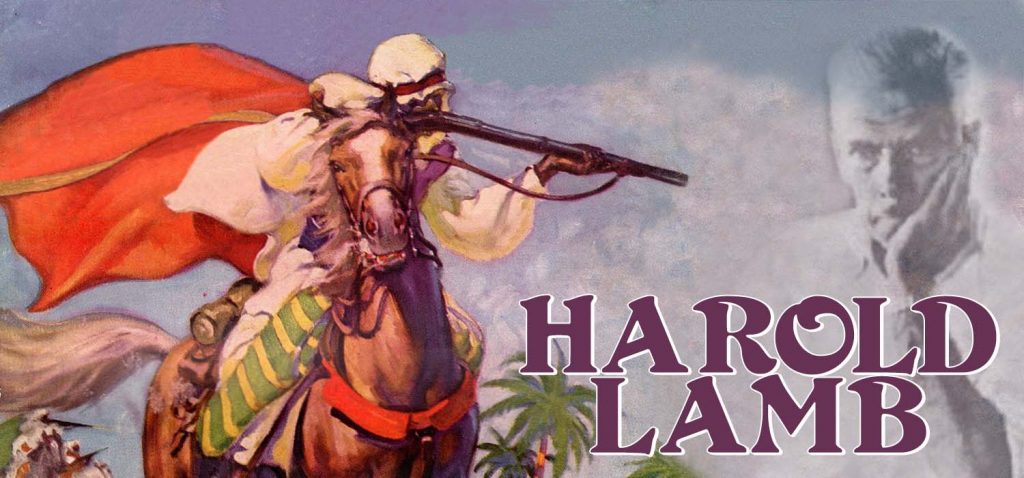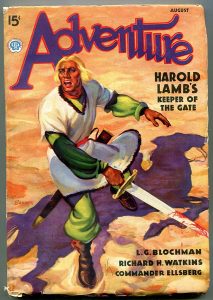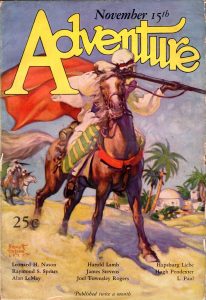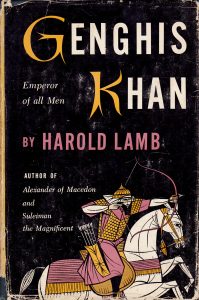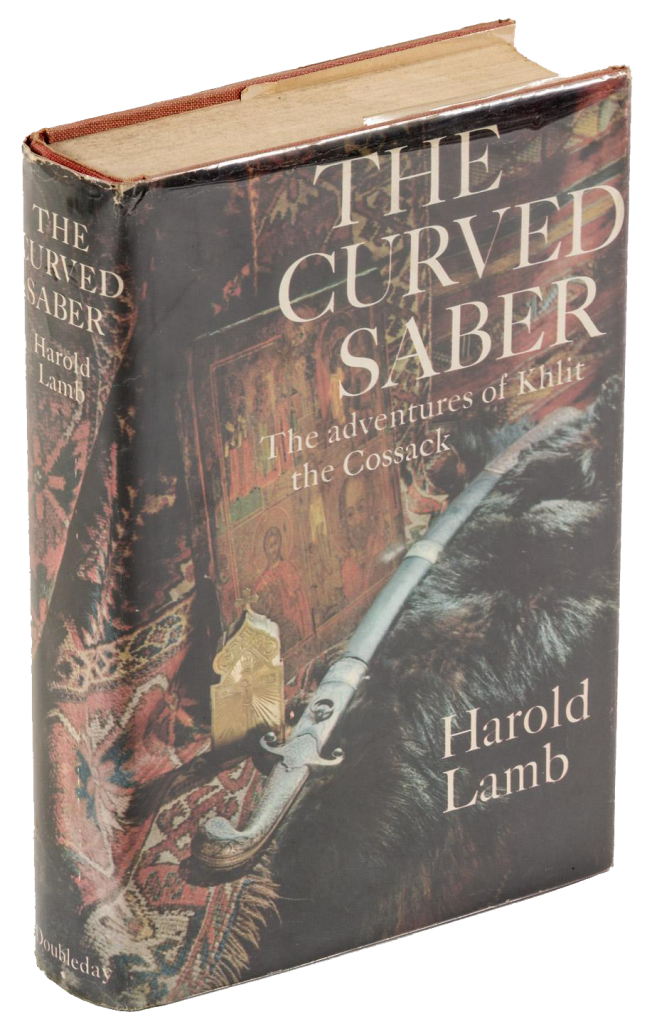Our Adventures in Fiction series is meant to take a look at the writers and creators behind the genre(s) that helped to forge not only our favorite hobby but our lives. We invite you to explore the entirety of the series on our Adventures In Fiction home page.
In the now-famed Appendix N, Gary Gygax lists roughly thirty authors whose works inspired the creation of Dungeons & Dragons. Many luminaries from the fields of both pulp sword & sorcery and horror fiction, as well as some then-current authors, fill that list. However, as with any catalogue of inspirational sources, Appendix N is merely representative of what the cataloguer was immediately aware of. Each of the names appearing in Appendix N were in turn inspired by other authors, who were influenced by yet older writers. This long chain stretches far back into antiquity, terminating somewhere in the past when humanity still huddled around the fire and told stories of monsters lurking beyond the firelight.
The purpose of this series is to further excavate the Appendix N list, removing a layer or two to examine the writers who inspired Gygax’s picks. This exercise will hopefully not only give us greater insight into the central and nearly universal themes that thread their way through the “weird fiction” genre (the original name for works of fantasy and science fiction), but also expand the field with new authors aspiring judges and other game masters can draw upon for ideas or simple reading enjoyment.
Appendix N Archaeology: Harold Lamb
by Howard Andrew Jones
Much as I’d like to hope that Gary Gygax read Harold Lamb, he’s unlikely to have found his way to any of Lamb’s most influential work. It’s not that Lamb wasn’t in print. From the 1940s on, his histories and biographies were a mainstay on library shelves, and many modern libraries retain his books to this day. But as fine as they are – and some of them are very fine indeed – Lamb’s histories and biographies weren’t the texts that were important to Appendix N. Those are his earlier fiction works, crafted for the pulp magazine Adventure (one of the finest and most respected of the pulp magazines). Unfortunately, most of those tales were out of print for eighty or ninety years.
In the early decades of the last century, the pulps were an entertainment mainstay, and vast numbers of periodicals were to be found on the corner newsstands. They were the television of their day, and readers could stop in for the newest collection of whatever genre they most enjoyed, be it detective stories, or romance, or air ace tales, or westerns, or even that Weird Tales thing. Most of the pulp magazines came out at least once a month. Adventure, which usually featured a couple of short novels and a bevy of shorter work, sometimes appeared three times every single month.
Any writer who encountered Adventure magazine between 1917 and the early 1930s would have had Lamb’s work readily at hand, because he was one of the magazine’s most popular writers and appeared there with great frequency. Probably the most important of those who saw him, though, was a Texan named Robert E. Howard, who counted Harold Lamb as one of his favorite authors. Howard used the same depictions of some Mongolian historical characters as Lamb in one of his own stories, and used Lamb’s Cossack fiction as a research tool for drafting his own. Through Howard, Lamb cast a very long shadow across the entire sword-and-sorcery genre.
The two writers share a number of overlapping interests. Both wrote of barbarians and outcasts and border regions, and civilization that was usually corrupt. Their prose style is fairly different, for Lamb’s work tends to be more spare, but much of their intent and focus is similar. Unlike either the tales of Conan or Lankhmar, however, Lamb’s Cossack adventures are written in sequence. They can be enjoyed out of order, but they’re even more fun to absorb as they were published, chronologically both for the characters and by date of composition. Some co-stars return for second appearances, and events in one story might build tangentially off of something mentioned in a previous tale.
Lamb died in 1962, just before the big Conan and Burroughs reprinting boom that might have reignited interest in his own stories, had he been alive to shepherd them back into print. While a few of Lamb’s Cossack stories had been collected by the late 1960s, all Gygax was likely to have seen from him were ranks of biographies. Lamb’s influence upon gaming was, therefore, indirect, although anyone who’s enjoyed the exploits of Conan or Fafhrd and the Gray Mouser will find much to love in the fiction of Harold Lamb.
Lamb was born into a family of artists and artisans in 1892, in Alpine New Jersey. Among close relatives were a famous architect, a presidential portrait painter, and several who designed stunning glassworks. He once described himself as having been born with damaged eyes, ears, and speech, adding that by later adulthood these problems had mostly righted themselves. Whatever ailments Lamb struggled with, they weren’t enough to keep him from serving in World War I, although he was lucky to have been drafted into service only a few months before the conflict drew to an end.
He hated school, and while he took refuge on the tennis court, he also took refuge in libraries, both his grandfather’s and the library of Columbia, where he first discovered the histories of eastern civilizations that fascinated him for the rest of his life. While Lamb was drawn to accounts of ancient Mongolia and Persia, nearly any border region of Asia intrigued him. It was only natural that when he turned to writing he set his stories in these lands.
He sold early and he sold quickly. By his mid-twenties he had cracked the prestigious Adventure. After penning a first few forgettable South Seas adventures, while still in the army in 1917 Lamb turned his eye towards the border between Russia and Mongolia and began to craft on one of the finest heroic fiction cycles in English.
Lamb’s work was direct and fast-paced, in stark contrast to that of many of his contemporaries. There was nothing slow or plodding about a Lamb tale, which drove forward with the impatience of a freight train at full steam. His stories were impeccably researched, often introducing real historical characters with whom his protagonists interacted. To most of his western readers, these adventures were set in places so unfamiliar and exotic they might as well have been science fiction.
He wasn’t so much politically correct as he was even-handed, because villains and heroes could come from any land. He avoided the simplistic depiction of foreign or unfamiliar cultures as evil and many of his heroes were Mongolian, Indian, Russian, or Muslim. Almost all of them were outsiders or outcasts. True supernatural events were very rare within his work, and his settings were real, if uncommon, places, but his fiction otherwise reads very much like the sword-and-sorcery adventure that came after him.
In company with the aforementioned strengths of his prose, his style was clean and direct, although Lamb was perfectly capable of lovely poetic metaphors, and he was never a formula plotter. His stories often turned upon surprising developments that rose from character conflict.
In 1927 Lamb wrote a biography of Genghis Khan that was very well received and has seldom been out of print, and from there on, he wrote for the pulps less and less. By the time the magazines had dried up he had transitioned to writing histories and biographies full-time, along with the occasional script for Cecille B. Demille. By the 1950s his expertise in his field of study had been acknowledged by the state department, who used him as an informal advisor, and who had employed him overseas as an OSS operative in World War II.
In order to research his interests he learned to speak French, Latin, Persian, Arabic, and, as he himself wrote, “a smattering of Manchu-Tartar.” Apparently he also spoke some ancient Persian, because L. Sprague de Camp once bumped into him on an elevator (they shared a publisher) and addressed him in that language. Lamb easily replied in kind.
His most sustained cycle of stories is centered upon Cossacks, primarily the Odyssean Khlit of the Curved Saber, who’s a central player in eighteen short stories, novellas, and the occasional novel (he makes a brief appearance in a nineteenth and is mentioned in a twentieth). He’s no youngster, but a gray-bearded veteran who chooses to ride off into the wilds of Asia rather than face forced retirement into a Russian monastery.
It’s grand stuff. Lamb quickly got his feet under him, and by the second or third Khlit story he was drafting fiction that can stand shoulder to shoulder with later classics like Howard’s “The Tower of the Elephant” or Leiber’s “Bazaar of the Bizarre.” By the eighth adventure Khlit had already infiltrated the hidden fortress of assassins, tracked down the tomb of Genghis Khan, been framed for the murder of a Chinese emperor, and been besieged by hordes of his enemies in a fortress in the middle of a frozen lake. Over the course of his journeys, he faces countless skilled bladesmen and scheming priests and reputed wizards, ever journeying into stunning and haunted lands. He bears with him a magnificent curved blade with a secret history, which is gradually unveiled to him as he journeys ever further east.
Sometimes he’s paired with his grandson Kirdy, sometimes he joins forces with the swashbuckling Muslim swordsman Abdul Dost (who co-stars in four stories and a novel of his own) and sometimes he’s teamed up with the Herculean Ayub and the wily Demid, who have their own small cycle of adventures.
Lamb also wrote several shorter adventure cycles that feature Crusaders, including a trilogy of novellas about a knight who finds and wields the sword Durandal, and the splendid exploits of far-wandering Niall O’Gordon, the last two adventures he ever penned for Adventure magazine.
Most of Lamb’s best fiction is now readily available in eight volumes, four of which collect his Cossack stories, with the rest of his work loosely organized by theme.
Lamb had less influence upon speculative fiction writers drafting in the seventies and eighties, who would not have been exposed to his fiction. However, at about the time Appendix N appeared in print, a small selection of his work began to trickle out, reintroducing him to a wider audience. As a result, while a generation or two had encountered him only indirectly via his influence upon other authors, writers like James Enge and yours truly found him an inspiration that directly impacts the way we approach our writing. In my case, his tales are one of my most important touchstones.
If you’ve never read outside the fantasy genre, he’s just one or two steps sideways, and well worth the short trip. For those who enjoy tales of grand adventure, he left a gleaming hoard of treasures.


